Special Reports
Ten Off-the-Beaten-Path Festivals
![]() Sometimes good things come from unexpected places
Sometimes good things come from unexpected places
As a complement to the listings in our annual Special Report on Summer Festivals, we thought we’d focus on ten of the lesser known—but worth the trip—festivals around the world. We put out feelers to our trusty contributors, and collectively they have come up with a splendid list of events that, we’d wager, you’ve never heard of. Italy’s Festival Opera Barga on your regular summer itinerary? How about the Shoton Festival in Tibet? Or the Northern Lights Music Festival in Aurora, Minnesota? Check them out….
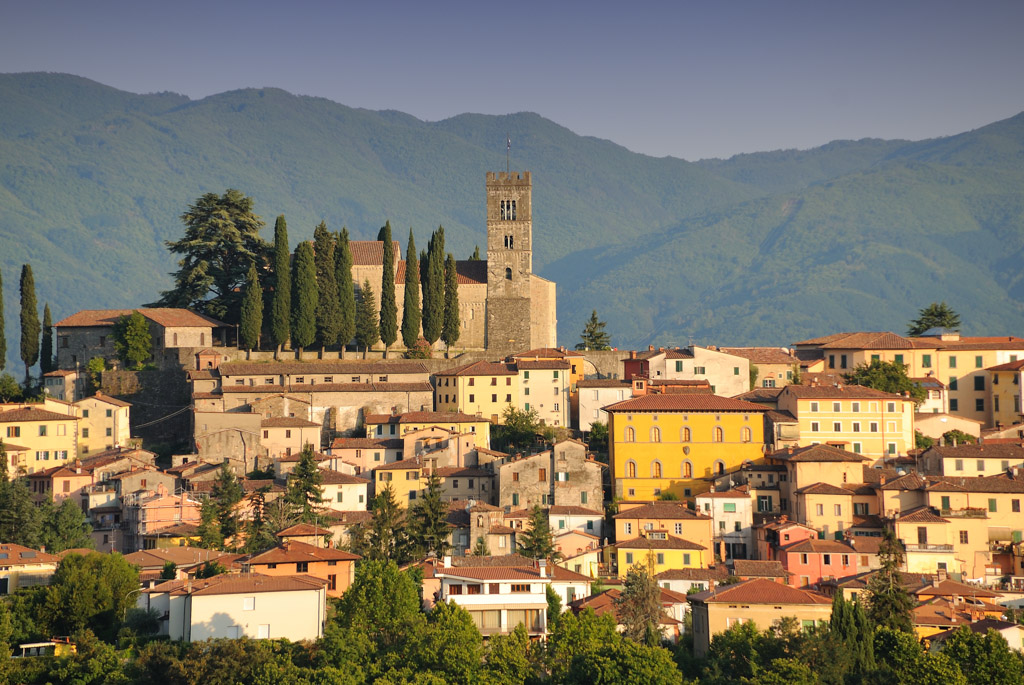 Festival Opera Barga
Festival Opera Barga
Barga, ITALY
June 26-July 26, 2015
Opera Barga is based in the medieval walled city of Barga north of Lucca, nestled among the green hills of so-called ‘‘Tuscanyshire”— a local joke as many historic mansions and farmsteads have been bought by affluent Britons. The festival, too, is run by a British expat: actor-cum-stage director Nicholas Hunt, whose parents Peter Hunt and Gillian Armitage founded the Festival in 1967 with the support of Italian-American music teacher Larry Malfatti and Peter Gellhorn, then director of the BBC and Glyndebourne choruses.
Its main venue is the 18th-century Teatro dei Differenti, seating 289; further venues are drawn into service both in Barga proper (Chiostro del Conservatorio di S. Elisabetta) and in the villages of Bagnone and Cutigliano. Since its inception, the Festival’s mission has been to present rare Baroque operas alongside avant-garde works—often world premieres. Young artists are selected through audition and given the opportunity to perform with guest artists from the world over.
The centerpiece of the 2015 season is Catone (Cato), a “pasticcio opera” in three acts that Handel produced in 1732 for London’s King’s Theater, inserting arias by famed composers of his day such as Leonardo Leo, Antonio Vivaldi, Leonardo Vinci, Johann Adolf Hasse, and Nicola Porpora. A wealth of vocal and instrumental recitals will round up the Baroque section, including duets by Monteverdi, Haendel, and Bach sung by soprano Roberta Invernizzi and contralto Sonia Prina. Modern music performances will revolve around Sibelius and the “Progetto Inaudita” (literally: Unheard-of things) project, a series of ten premieres performed by the Ensemble Multilaterale and led by composers Francesco Filidei and Franck Bedrossian.
The festival is funded by the Regione Toscana (35,000 euros), the National Ministry for Culture and the banking foundation CariLucca (25,000 euros each). A further 40,000 euros comes in from coproductions with the resident period band, AuserMusici. Minor, yet treasured, contributions are offered by the City of Barga (10,000 euros) and sundry private donors, including 5,000 euros from crowdfunding. Total assets are estimated around at 180,000 euros, largely invested in productions, artists’ salaries/expenses, and communication/marketing. Management goes unpaid, save for expenses. —Carlo Vitali
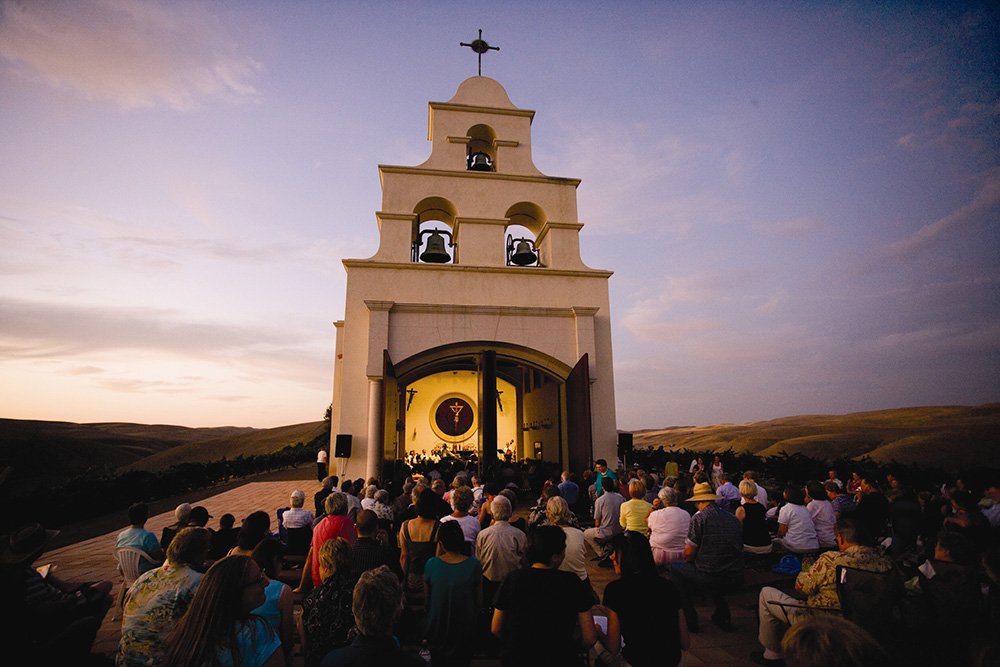 Festival Mozaic
Festival Mozaic
San Luis Obispo, CALIFORNIA
July 16-26, 2015
California Central Coast’s Festival Mozaic was originally known as the San Luis Obispo Mozart Festival; the new name reflects its expanded mosaic of music.
Launched in 1971, the festival experienced a brief moment in the headlines in 1981 when Maxim Shostakovich and his son Dmitri, Jr., made their first formal concert appearances there after defecting from the Soviet Union three months prior––accompanied by a cellist friend named Mstislav Rostropovich. But generally, the festival has kept a fairly low profile.
Nonetheless, it sports a very high caliber of music-making from a mix of local musicians, young graduates, and seasoned pros from major orchestras such as the Los Angeles Philharmonic, San Francisco Symphony, and the Cleveland Orchestra. Conductor Scott Yoo, who also plays violin in the chamber ensembles, has been the music director since 2005, and his programs can stray outside the usual repertoire into intriguing esoterica. The festival has a $560,000 annual budget—55 percent of it earned income and 45% donated–with some support from the city and county of San Luis Obispo.
For its 45th-anniversary season, July 16-26, Festival Mozaic will be building around the theme of J.S. Bach and his influence upon Western music, culminating in two performances of the B minor Mass, which Yoo conducts from memory (July 24-25). There will be 22 events in all–including baroque and all-Mozart orchestra concerts, chamber concerts, open rehearsals, and a “fringe” series where humor, pop, folk, jazz, and the avant-garde lurk.
Most enticingly, Festival Mozaic takes place in concert halls, historic missions, homes, and other locales throughout San Luis Obispo County near the Pacific coast-–a good place to be when it’s sizzling elsewhere. The festival has also been latching onto the region’s newly burgeoning reputation as a wine connoisseur’s destination; several local wineries offer a 20 percent discount for ticket holders. It may not have a low profile for long. —Richard S. Ginell
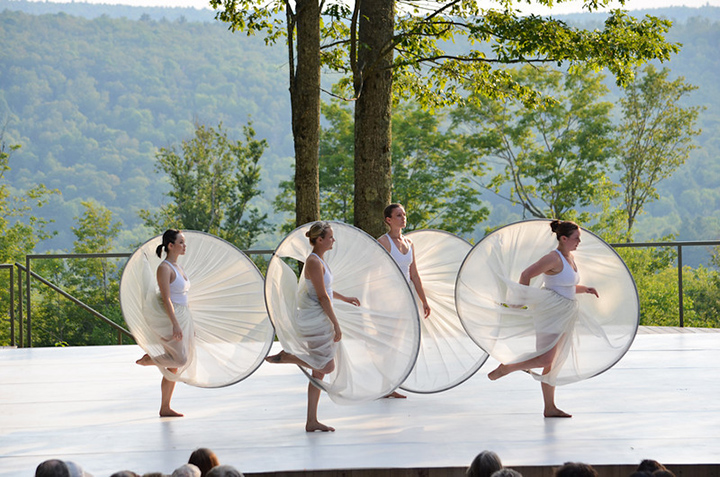 The Inside/Out Series
The Inside/Out Series
Jacob’s Pillow Dance Festival
Becket, MASSACHUSSETTS
June 24-August 29, 2015
For many people, the Inside/Out series has provided their first taste of concert dance—for free. Approximately 31 performing groups, one 45-minute performance at a time, take to the elevated stage, overlooking the verdant Berkshires Mountains on the hallowed grounds of Jacob’s Pillow Dance Festival, America’s oldest continually operating dance festival.
Inside/Out presents new and cutting-edge artists and their work every Wednesday through Saturday evening outdoors before the paid Pillow event in the Ted Shawn or Doris Duke theaters (named, respectively, for the founder and major funder of the Pillow). In some cases, you’ll see history in the making—many Inside/Out artists are now touring the world, having gotten their start on the Pillow’s outdoor stage. You don’t need tickets--just bring a picnic basket. Performances are from 6:15 to 7:00 p.m.; lighting is courtesy of Mother Nature; and the sunsets can be spectacular. When it rains, the show always goes on, inside one of the dance studios. Artists are always on hand for a quick Q&A after their performances.
The festival does not release the Inside/Out schedule until mid-April; dance companies that have applied to participate need to be the first to know if and when they’re scheduled. But Saturday night’s Inside/Outside events, which are provided by the students of the Pillow, have been announced.
June 27 they will perform a new work created on them by BalletX Artistic Director Matthew Neenan. July 4 and 11 will be devoted to exploring African American social dances, from authentic jazz to hip-hop. For three Saturdays starting August 8, students perform new works created on them by Broadway choreographers, directors, composers/arrangers, and musicians. The idea is for them to experience—and for the public to witness—what a Broadway audition feels like.
Curated by Festival Artistic and Executive Director Ella Baff, with the help of Program Coordinator Ariana Brawley, who sifts through approximately 250 video submissions annually, the Inside/Out’s chosen groups are given an honorarium to defray their expenses.
The Inside/Out series continues Pillow founder Ted Shawn’s missions to promote all forms of dance, to offer insight into the creative process, and to foster the dream of art for all, regardless of one’s paycheck. —Rachel Straus
Monadnock Music
Petersborough, NEW HAMPSHIRE
July 8-August 10, 2015
Monadnock Music is set among the hike-worthy hills, sparkling lakes, and white-painted old towns of southern New Hampshire, an hour or two from Boston, and runs for five weekends in July and August. Largely funded by loyal local donors (with an assist from the New Hampshire State Arts Council), Monadnock, which is celebrating its 50th year, is intentionally small scale, with no single centerpiece group or venue: music as part of a summer’s retreat in the country rather than its principal focus. Founders James and Jocelyn Bolle wanted to explore the music venues of this bucolic, unfashionable region and give up-and-coming artists a chance to perform for attentive audiences outside the big cities.
The town of Peterborough is at the heart of things, but the summer’s dozen or more events take place in other scenic villages as well, sited in town halls, churches, and meeting houses, generally constructed between 1790 and 1830—rooms whose individual acoustics suit the festival’s varied fare. Programs run from recitals and chamber music to small orchestra concerts, from ancient music to contemporary, familiar to unknown, though in the past particular attention has been paid to such regional stars as Edward McDowell, Amy Beach, Charles Ives, and Gunther Schuller as well as more usual suspects.
Gil Rose, who has led the festival since 2011, draws on his winter jobs heading the Boston Modern Orchestra Project and Odyssey Opera to attract participants from around the country and a few international artists as well. This year many alumni are expected to return to celebrate the 50th anniversary on the weekend of July 25. The festival opens on July 8 in Peterborough’s Town House, with Rose leading an all-Gershwin program, including the original jazz-inflected orchestration of Rhapsody in Blue created for Paul Whiteman’s Band. Village concerts request a donation; more official events are $30 a seat, $50 for the grand anniversary concert. —John Yohalem
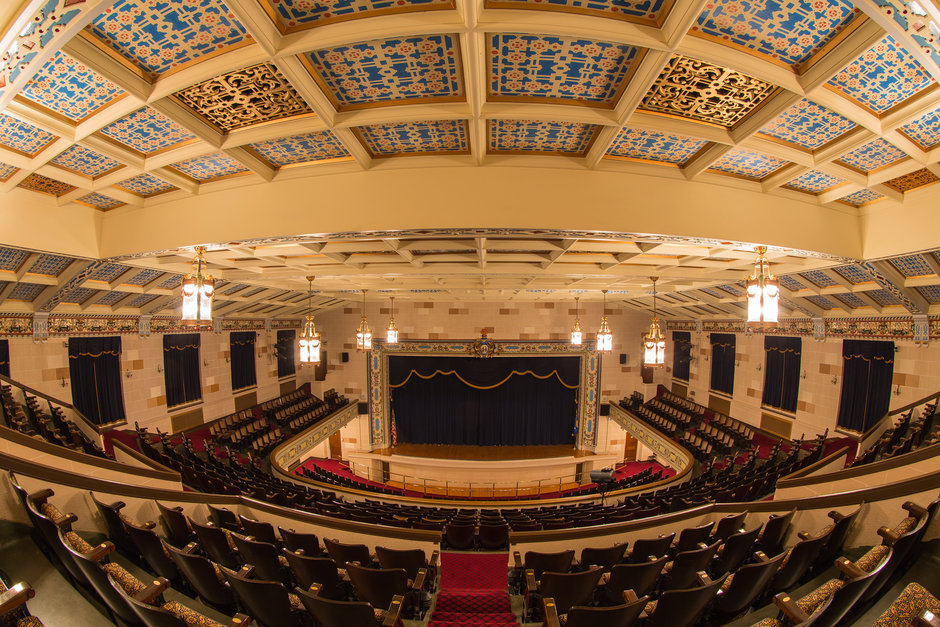 Northern Lights Music Festival
Northern Lights Music Festival
Aurora, MINNESOTA
June 28-July19, 2015
The city of Aurora, in northeastern Minnesota, is not a place you’d expect to encounter a lot of cultural activities. Even the movie theater closed a few years ago. Two hours by car to the nearest big city, Duluth, and one hour from the Canadian border, it is a favorite spot for hunters and fishermen, as well as hikers on the Mesabi Trail. And for a few summer weeks, this quiet town of 1,800 is transformed into a communal celebration of classical music.
Northern Lights Music Festival started in 2004 as a two-week summer music camp for gifted children. Founder/pianist Veda Zuponcic, a professor at Rowan University in New Jersey who was born and raised in Aurora, got the idea while performing at a celebration of the city’s 100th anniversary. From the stage of the Aurora School’s beautifully equipped Aurora School auditorium, she got to thinking, why not use some of these magnificent old 1920s school buildings in summer time and bring back some business and culture to the community?
Relentless efforts by Zuponcic and local supporters brought funding from state government and private sources. Donations continue to pour in, enabling concerts to be free and opera tickets to cost only $20-25.
In 11 years, NLMF has developed into a major nearly 30-day event offering master classes, recitals, concerts for children, lectures, chamber and orchestral performances, and a fully staged opera whose three to four performances are invariably sold out. Major roles are handled by young professionals, and the chorus is semi-professional; everyone else, including the children, is a volunteer. Members of the community all pitch in, whether building sets, running the lights, or performing. The town provides the venues at no charge.
In the summer of 2013, I heard a beautiful performance of La Bohème, led by Festival Music Director Gavriel Heine (also a conductor at the Mariinsky) and performed by young singers with a 40-member orchestra comprised of players from 17 to 57.
Performances take place in Aurora and nearby Chisholm, Hibbing, and Ely, in schools and historical venues, like the 105-year-old, recently restored B’nai Abraham Synagogue in Virginia. Students and faculty present a Fourth of July concert in the school auditorium after the local parade, in which the Festival, with its own lavishly decorated float, is an indispensable participant. This year’s concert offers Gershwin’s American in Paris; other season highlights include Lehar’s Merry Widow, several tributes to Alexander Scriabin, and vocal workshop concert with scenes from Der Freischütz; Susannah; and The Marriage of Figaro. —Maya Pritsker
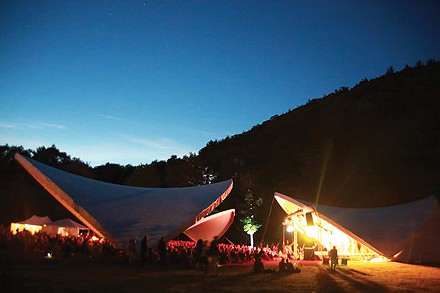 The Phoenicia International Festival of the Voice
The Phoenicia International Festival of the Voice
Phoenicia, NEW YORK
July 29-August 2, 2015
The Phoenicia Festival of the Voice is—in the words of a Sondheim song to be heard there this summer—a “weekend in the country.” And a very full weekend it is, in a Catskill State Park hamlet west of Woodstock, NY.
Because this five-year-old event celebrates the voice both singing and speaking, there are several categories of vocal music, as well as a theater production. This summer’s aptly named theme is, “The Diverse Voices of America.” A concert staging of the opera Of Mice and Men is to be directed by the composer, Carlyle Floyd, and Robert Manno’s opera, Do Not Go Gentle—The Last Days of Dylan and Caitlin, will have its premiere, in workshop form. Elizabeth Scott will conduct the festival orchestra, created from a mix of New Jersey Festival Orchestra members and local and international musicians.
The cast of Sondheim’s A Little Night Music will be led by Tony nominee Ron Raines. (Susan Powell, a former Miss America, will be Desiree, who sings “Send in the Clowns.”) Souvenir, Stephen Temperley’s funny and poignant two-character play, recreates Florence Foster Jenkins, an endearingly awful singer who used her wealth to create a vocal career for herself.
Recitals of American songs—some newly composed and/or written for the singer—will be presented by Frederica von Stade and Lauren Flanigan. Composers Jake Heggie, Thomas Pasatieri, and Ricky Ian Gordon will all be represented.
Driving is a scenic and convenient way to get to Phoenicia, but in that tiny town, one can walk to the seven busy venues. These range from a parish church to a covered lawn big enough for several thousand listeners and their picnics. According to baritone Louis Otey, a festival co-founder who sang small roles at the Met, the festival budget of $90,000 comes largely from the New York State Council on the Arts, and from several local donors (none with deep pockets). Tickets to performances, panels and workshops range from free to $75. —Leslie Kandell
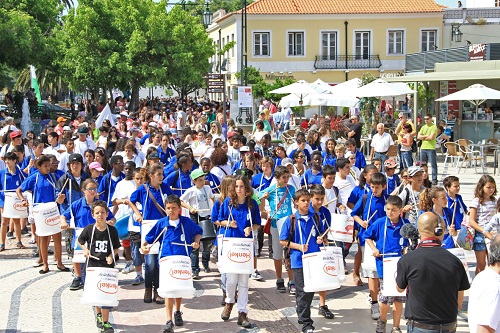 Setúbal Music Festival
Setúbal Music Festival
Setúbal, PORTUGAL
May 28-31, 2015
As much about social regeneration as about art, the Setúbal Music Festival was started at a time when Portugal was negotiating an $89 billion rescue program, and the local mayor looking for a strategy to revive her town through music. Former City of London Festival Artistic Director Ian Ritchie was brought in and he met with heads of local education and cultural institutions, social inclusion specialists, the department of youth, and the immigrant associations to build a festival from the ground up. It was launched in 2011 with a songwriting project for primary schools and a drumming workshop.
The theme for 2015 is “Climate.” Highlights include a Four Seasons project, in which Vivaldi’s seasons are interwoven with Piazzolla’s, with soloist/director Hugo Ticciati and the Portuguese Chamber Orchestra sharing the stage with young musicians from the two local music schools, and a choral concert inspired by the great earthquake of 1755 featuring Officium (one of Portugal’s best professional choirs) with the U.K.-based Pandora’s Box brass ensemble and the choir of the local Conservatoire. A new show, The Tide Suite, created through the continuing collaboration between the Conservatoire’s Contemporary Music Group and the special-needs school Rumo ao Sucesso (“Aim to Succeed”) features a guest appearance of John Kenny and his carnyx (2,000-year-old bronze Celtic war-trumpet). The school’s teachers composed the work.
The festival has a budget of approximately $200,000, funded by the Helen Hamlyn Trust and the local Town Hall, working in partnership. The trust puts in $130,000 to cover all fees and expenses for the guest artists, the leaders of the school and community workshops that run for six months in advance of the festival, and the part-time artistic director. The Setúbal Municipality adds about $60,000 in kind for venues, stages, transport, and promotion materials. Most events are free, and the modest box office income of about $10,000 is used to cover costs of musical instruments and sound equipment. —Keith Clarke
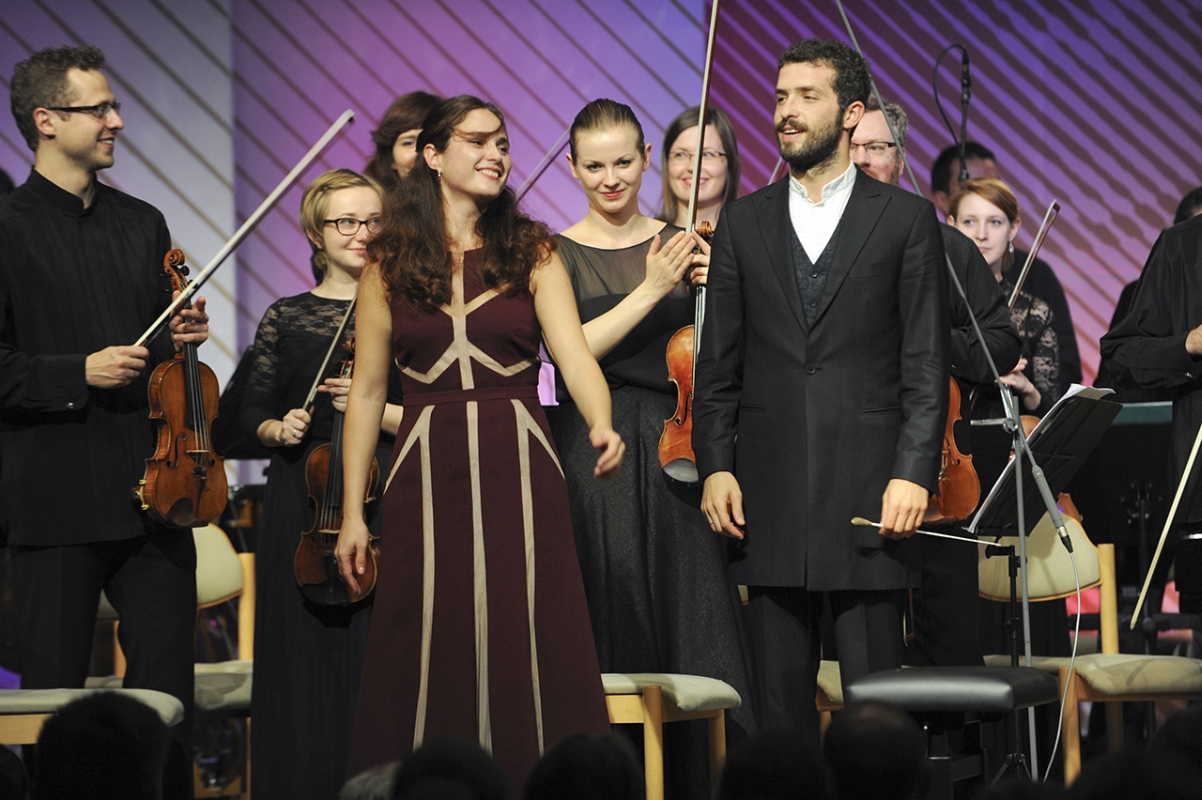 International Shostakovich Days Gohrisch
International Shostakovich Days Gohrisch
Gohrisch, GERMANY
June 19-21, 2015
What’s this? A world-class Shostakovich Festival in the Saxon mountains? Since 2010, the annual International Shostakovich Days Gohrisch has been offering composer-focussed programs with a mix of legendary names and talented young artists. Despite its remote location, Gohrisch, a town 24 miles outside Dresden, goes down in history as the place where Shostakovich wrote his Eighth String Quartet—the only work he wrote outside the Soviet Union.
The event, at least for now, mostly draws its audience from the local region, contributing to the unpretentious atmosphere. In the absence of a proper hall, concerts take place either in a circus tent or a barn—the high quality music-making outshines the need for luxury. With an annual budget of approximately $168,000, 40 percent of which is provided by the State of Saxony, all musicians perform for no fee, in exchange for room and board.
I will never forget the sight of Gidon Kremer in his arrangement of Gubaidulina’s Reflections on B-A-C-H as rain pounded onto the tent’s plastic roof last year. Or the chemistry between the young pianist Anna Vinitskaya and conductor Omer Meir Wellber in a performance of Shostakovich’s Second Piano Concerto with the Kremerata Baltica.
Every edition explores Shostakovich through a new lens by thoughtfully integrating 20th-century and contemporary repertoire. In 2012, concerts explored Shostakovich’s legendary friendship with Britten, culminating in searing final concert with the Staatskapelle Dresden under Mikhail Jurowski. This year’s program will revolve around the music of Arvo Pärt and Vsevolod Zaderatsky, a contemporary of Shostakovich whose persecution by the Soviet regime cast his works into obscurity. The Russian-born pianist Jascha Nemtsov will give the world premieres of three works, including the 24 Preludes and Fugues, which Zaderatsky wrote in the Gulag. Rarely performed works by Shostakovich include his incomplete Violin Sonata of 1945 and Six Poems by Marina Zwetajewa for Alto and Chamber Orchestra op. 143a, which Vladimir Jurowski will perform with Maria Gortsevskaya and the Staatskapelle Dresden. —Rebecca Schmid
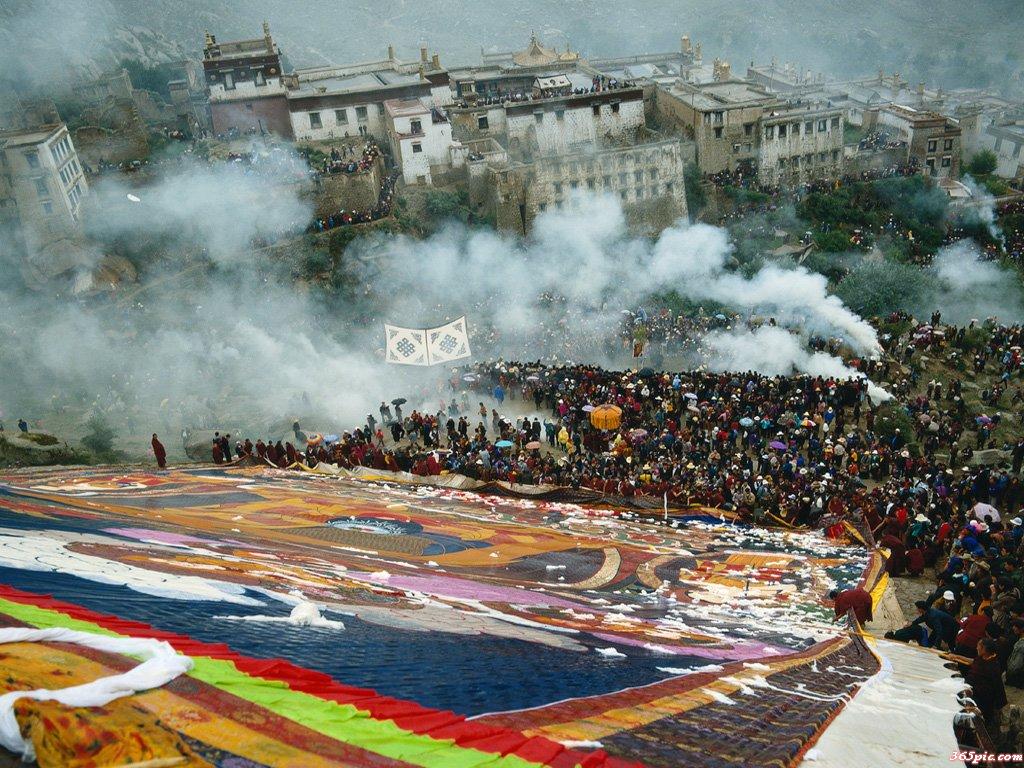 Shoton (Sho Dun) Festival (Chinese language web site only)
Shoton (Sho Dun) Festival (Chinese language web site only)
Norbulingka, TIBET
August 25-29, 2015
Located in Norbulingka and its vicinity of Lhasa, Tibet, Shoton (Sho Dun) Festival was founded in 1913, but its tradition dates back to the 11th century, when Buddhist monks and believers gathered to celebrate the end of Tibetan Ramadan. (Shoton, literally translated, means “yogurt feast.”) The modern Shoton, taken over by the municipal government of Lhasa from the religious authority, retains its strong sense of piety but has become more accessible to the general public. It provides a showcase of rarely heard Lhamo, or Tibetan opera, as well as Buddist music and Tibetan patriotic songs.
Events take place in the shrines and parks of Lhasa—Potala Palace Plaza, Drepung Monastery, Sera Monastery, Angular Lu Kang Park, and Norbulingka Park—where local Lhamo troupes compete for a grand prize.
Lhamo is sung as well as recited, often to the heavy accompaniment of a choir, cymbals, and drums. The lack of pitched instruments, the huge blue masks worn by the actors, and the atonal-like singing and rapping are fascinating to experience.
But it is the opening of Shoton that takes the center stage. A huge thangka of Gautama Buddha is gradually unfolded down the Drepung hilltop before dawn, accompanied by Buddhist chanting and ensemble playing. At the exact moment of sunrise, the holy thangka is revealed in its full glory as the music reaches its climax. This is followed by a flood of some 400,000 worshippers from all over the world, a spectacle comparable to that of the Papal Mass in St. Peter’s Basilica.
Details of this year’s program will be announced in early August. The festival’s official web site is not consistently up and running, but keep trying. Performances cost 3 RMB a piece (about 50 cents), or 60RMB for an all-event pass. Note that non-Chinese passport holders need to have special permit to travel to Tibet except in groups. —Rudolph Tang
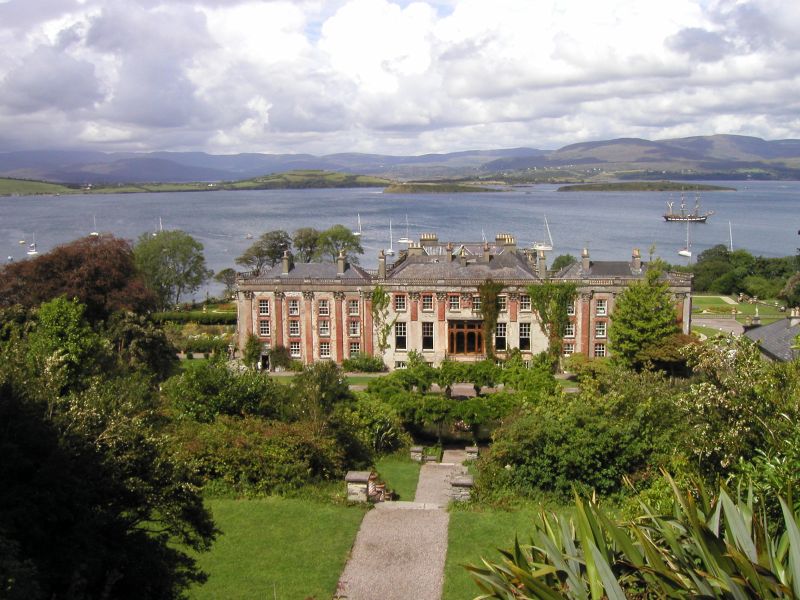 West Cork Chamber Music Festival
West Cork Chamber Music Festival
Bantry, IRELAND
June 26 - July 4, 2015
One of Europe’s most beguiling festivals, the West Cork Chamber Music Festival, had an unlikely start. Chamber enthusiast/dairy farmer Francis Humphrys was irked that he had to travel so far to hear the music he loved, so during the long early-morning milking sessions he dreamt up the idea of setting up an event in the coastal town of Bantry in a remote corner of southwest Ireland. Assisted by the Vanbrugh Quartet, he mounted the first festival in 1996, 35 musicians giving 13 concerts and three master classes over seven days. Now, 20 years on, the festival is broadcast to an international radio audience of 40 million with more than 70 musicians giving 37 concerts and 20 master classes over nine days.
From the start, Humphrys’s imaginative programming has been one of the great strengths of the festival, with an emphasis on lesser-known works alongside more standard repertoire. He writes most of the comprehensive program notes himself, revealing a deep knowledge and insight.
This year’s highlights include a return visit from the Borodin Quartet, now in its 70th year, and five world premieres, including Ian Wilson’s Sonàid béaloidis played by violinist Alina Ibragimova. Also getting first performances are the four winning works of the Composition Competition for Young Irish Composers.
The festival takes place in a number of local venues, notably historic Bantry House, owned by the same family since the mid-1700s. Its wood-panelled library is the perfect venue for chamber music, the audience crammed in on three sides of the small platform to enjoy the great sound and a quietly intimate atmosphere.
In the two decades since the festival’s founding, Ireland’s economy has taken an historic dive, and Humphrys has worked hard to keep the event afloat. It is funded by the Arts Council of Ireland and Failte Ireland (the tourist board), this year’s budget coming in at $539,000. —Keith Clarke

WHO'S BLOGGING

Law and Disorder by GG Arts Law
Career Advice by Legendary Manager Edna Landau
An American in Paris by Frank Cadenhead





 FEATURED JOBS
FEATURED JOBS

 RENT A PHOTO
RENT A PHOTO


